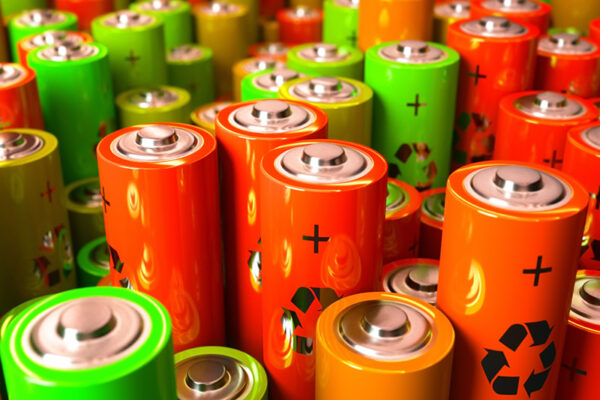Electrochemical reactors for recovering all the critical materials from LIB cathodes, including lithium, manganese, nickel, and cobalt.
Proposed use
This innovative technology recycles waste LIB cathode materials into valuable products, offering a sustainable solution for waste management and clean energy development. It efficiently recovers manganese as manganese dioxide (MnO₂), which serves as an electrode material and a key resource for energy storage devices like supercapacitors and LIBs. Hydrogen (H₂) is generated as a co-product, providing a clean energy source to replace fossil fuels. The process also retrieves nickel cobalt alloys, which are essential in industries such as aerospace (jet engines, gas turbines), chemical processing, petroleum refining, marine applications, electronics, and LIB manufacturing. Additionally, lithium is recovered either as lithium hydroxide (LiOH) or lithium carbonate (Li₂CO₃), both critical for LIB production. These compounds are also fundamental in producing a wide range of lithium-based products and have diverse applications beyond LIBs.
Problem addressed
As the world transitions to electric vehicles and rechargeable batteries, the demand for LIBs is surging, driving remarkable growth in the global lithium-ion battery market, which is projected to expand from USD 54.4 billion in 2023 to USD 116.6 billion by 2030. However, with LIBs having an average lifespan of 8–10 years, the accumulation of spent batteries presents significant environmental risks if improperly disposed of, potentially releasing toxic metals and harmful organic electrolytes into the environment. Moreover, the sustainability of critical materials like lithium, cobalt, and nickel is under increasing pressure due to limited mining resources and geopolitical factors. As a result, the market for recycling used LIBs is rapidly expanding, as it reduces reliance on finite raw materials, mitigates environmental pollution, promotes long-term sustainability, and supports the transition to a net-zero emissions future.
Technology overview
This invention features two distinct configurations, both designed to efficiently recover materials through a continuous process while ensuring the complete recovery of target ions. The reactors operate in series and can be easily scaled up for use in industrial recycling plants. Target materials are selectively recovered without the need for additional reactants, relying solely on basic reagents to adjust pH levels. Moreover, the overall process generates no waste solution.
Benefits
- High recovery efficiency in final products exceeds 90%, with high purity levels of 95%–99% and low energy consumption.
- No high temperature required, and no toxic gases generated compared to pyrometallurgical process.
- Low chemical consumption with hight energy-efficient compared to typical hydrometallurgical process.
- Recovered materials are directly available in the reactors, eliminating the need for additional recovery or purification steps.
- The proposed electrochemical processes are easily scalable.



